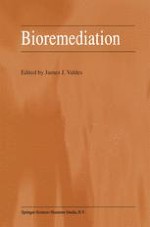2000 | OriginalPaper | Buchkapitel
A New Sensor for Environmental Monitoring and Assessing Human Cytotoxicity: Use of Cytosensor Microphysiometer
verfasst von : Amira T. Eldefrawi, Mohyee Eldefrawi, James J. Valdes
Erschienen in: Bioremediation
Verlag: Springer Netherlands
Enthalten in: Professional Book Archive
Aktivieren Sie unsere intelligente Suche, um passende Fachinhalte oder Patente zu finden.
Wählen Sie Textabschnitte aus um mit Künstlicher Intelligenz passenden Patente zu finden. powered by
Markieren Sie Textabschnitte, um KI-gestützt weitere passende Inhalte zu finden. powered by
There is increasing need in industry and government for toxicity assessment of the growing numbers of new chemicals added to the environment such as pesticides, industrial products, hazardous waste, food additives, cosmetics and therapeutics. This is necessary for regulatory and other purposes. Hundreds of thousands of laboratory animals are used in toxicity testing so as to obtain statistically significant results. Because of these and ethical circumstances such as undue pain and suffering, there is a growing demand for use of alternative testing methods. Most importantly is the sometime (inherent) inaccuracy of extrapolation of toxicity data from animal studies to humans. An example is the high potency of demyelinating agents (e.g. tri-orthocresylphosphate) to chicken, cat and human but not to rodents (the choice animals for toxicity studies). Another is dioxin, which is a most potent carcinogen to rodents but much less so to humans. Thus, the only way to reliably predict the human toxicity of a chemical is to test it on humans. This is not feasible, but the availability of many human cell lines make possible the collection of human in vitro toxicity data.
